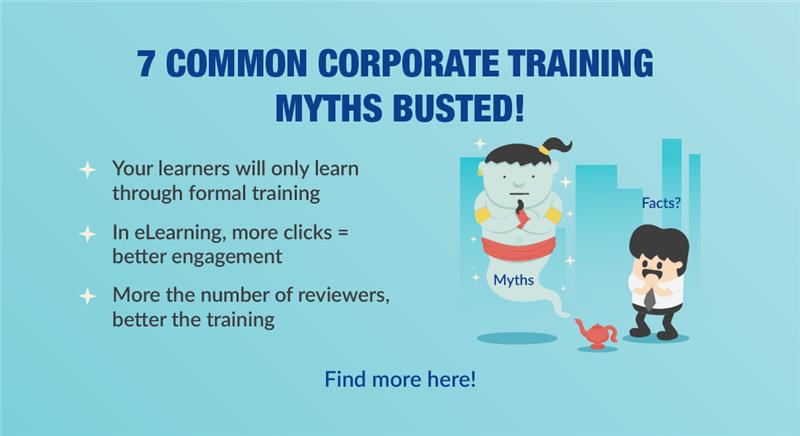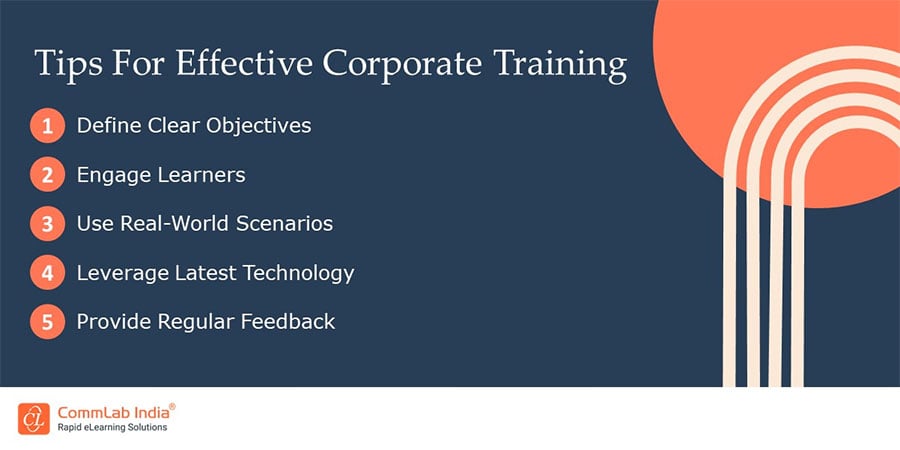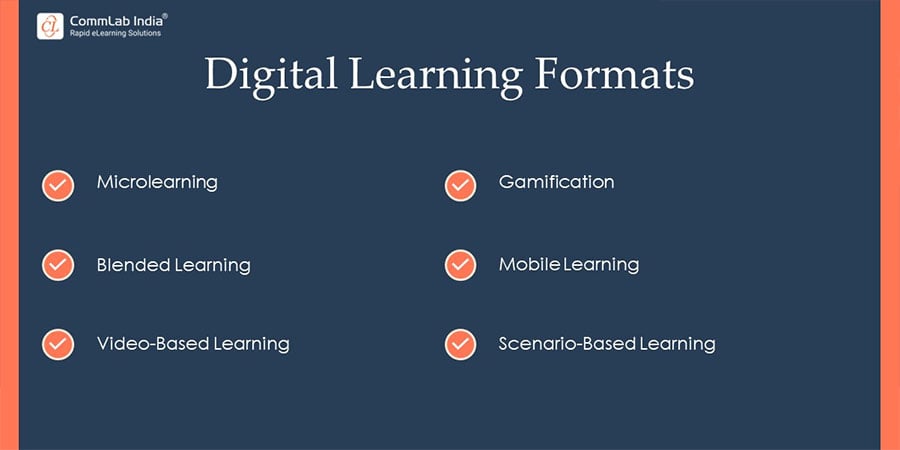7 Corporate Training Myths You NEED to Stop Believing

Myths are everywhere and about everything. And once a myth becomes popular, it can be hard to see the true picture and get the facts. This is because myths are primarily heavily biased and flawed interpretations of research findings or other data sources that are repeated so often that they become ‘real’. You must’ve encountered quite a few corporate training myths yourself. Let’s explore 7 of the most common training myths and bust them – once and for all.
7 Corporate Training Myths Dispelled!
- Training Is the Solution for All Your Business Problems
- Your Learners Will Only Learn Through Formal Training Sessions
- E-Learning Is the Only Digital Learning Format
- If You Build, They Will Come
- In eLearning, More Clicks = Better Engagement
7 Popular Corporate Training Myths Busted!
1. Training is the Solution for All Your Business Problems
We wish training could fix all your business problems but sadly it cannot! Corporate training can resolve one basic problem – lack of skill or knowledge. If it’s a performance issue arising due to a lack of skills and knowledge, corporate training can fix it easily. All you need to do is offer effective training programs and ongoing learning support, and viola – your problem is solved!
However, when your employees have the required knowledge to do the job but are not motivated enough, training will not fix the problem. You need to look for other factors such as:
- Technical issues with workplace equipment that hinder employees’ performance on the job.
- Unusual restrictive policies that impinge on employees’ freedom to work.
- Outdated processes and procedures which fail to meet the current needs of employees.
But how can you decide if it’s a performance issue due to lack of training or if some other factor is involved?
That’s where a thorough performance needs analysis or gap analysis comes in. It will help you identify if performance issues exist, and if they do exist, if they can be solved by training.

2. Your Learners will Only Learn through Formal Training Sessions
Gone are the days when learners had to rely on formal training methods, such as in-person (structured and organized) to acquire new knowledge and skills. Thanks to technological advancements, the learning opportunities are endless, more varied, and most importantly, almost instantaneous.
So, your modern learners need not rely only on formal training sessions, not anymore. They can also learn on the job and from their peers. In fact, according to the 70:20:10 model, learners learn the most from working (70%) and interacting with peers in the workplace (20%). Examples include assisting a supervisor, reading a blog, watching a video from the learning portal, interacting with peers/SMEs, participating in a group discussion on the Learning Management System (LMS), and so on.
This means only 10% of the learning comes from formal and planned training sessions.
→ Download Now: Rapid eLearning: How Does it Level up Your Corporate Training
3. E-learning is the Only Digital Learning Format
We understand that eLearning is quite popular with training managers, but don’t forget to explore other options too! You can go for:
Virtual Instructor-led Training (VILT) when you want to replicate the in-person essence of a classroom session on a virtual platform. VILT is perfect for behavioral training (such as team building, leadership, and soft skills) or anything that needs employees to work together to build, improve, or change an attitude.
Blended Learning when you want to offer the best of classroom and online training (eLearning and digital learning assets such as microlearning, mobile learning, videos, assessments, audio podcasts, eBooks, and more). However, you need to carefully decide on the blend. For instance, classroom training is preferred when the content is complex and the task is risky, requiring supervision, in-person interactions, and practice to master training. On the other hand, eLearning is preferred for teaching concepts and procedures, to offer self-directed learning, and when you have a dispersed workforce to train.
You can use videos to demonstrate how to use (step-by-step) a piece of equipment, leverage mobile learning for anytime anywhere access, and include microlearning modules to provide a short introduction or summary to quickly brush up concepts in a blended approach.
Microlearning is ideal when your employees are hard-pressed for time and need targeted and relevant information on the go to fulfill their training requirements. Microlearning is so versatile that you can use it with classroom, VILT, as well as eLearning to support formal learning. Moreover, microlearning assets (videos, infographics, eBooks, audio podcasts) make for excellent performance support.

4. If You Build, They Will Come
Well, we all wish this were true, but let’s face the facts, It’s just a myth!
Even with mandatory training programs, learners need to show up and be willing to learn. If you are under the impression that creating a Netflix-like learning platform is enough to get employees started with learning, that might not work!
L&D leaders must do more than just offer courses to learners. You need to make sure training programs:
- Address specific learning needs and goals of your learners. (Conduct a training needs analysis to identify what those are.)
- Are based on relevant learning objectives that help achieve the desired goals.
- Leverage new-age learning strategies that aim to provide learning with fun.
- Include only need-to-know information and make learning digestible and easy to retain. (You can offer nice-to-know information through links, icons, additional resources, etc.)
- Are easy to use and intuitive for learners. Ensure organizational branding and standardization in the look and feel of the course to build a connection with the learner.
- Align the assessments to the learning objectives to evaluate learners’ knowledge.
- Your learners also need to know how the training is relevant to them – the ‘what’s in it for them’.
You need to create a buzz about the upcoming training program and explain to your busy learners why they need to spend time on the training.
5. In eLearning, More Clicks = Better Engagement
There’s more to learner engagement in eLearning than the number of clicks. Just like a good movie or a book pulls the audience in and hooks them into the story, eLearning courses also need to keep the learner engaged in the learning. You can do that through peer-to-peer interactions, relevant and interesting graphics, and multimedia elements to transform dull and static content into an engaging and immersive learning experience.
So instead of just including clicks, think about eLearning interactivities that will add meaning as well as engagement. However, you need to consider a few things before adding interactivities to your eLearning courses:
Training Goal: If there is a performance gap due to a lack of real-life experience, then learners need to acquire knowledge and the opportunity to practice. The solution would be to provide simulations or scenario-based learning to ensure learners get hands-on experience.
Relevance: Will adding interactions add value to the course? For instance, if your eLearning course is all about basic facts and concepts, would a game-based interactive approach be relevant? A much simpler approach with click-on-tabs and drag-and-drop would work very well in such cases.
Context: It’s important to identify when, how, and why your learners will be accessing the learning. For instance, your sales executive should not go through a 30-minute game-based course to find relevant information to interact with a customer. An interactive infographic, on the other hand, can quickly help brush up information and apply it almost immediately.
6. More the Number of Reviewers, Better the Training
Adding more reviewers to projects that are already in progress – is only going to create confusion and slow down things. The subject matter expert along with xthe training manager are the ones necessary for course reviews.
So, you need to eliminate this right in the planning stage. You should agree on the number of reviewers that are needed. A focused team ensures agile development and faster results.
7. Classroom Trainers Cannot be Effective Virtual Trainers
Just because classroom trainers don’t use much technology in the classroom, it doesn’t mean they won’t do well in virtual classrooms. All they need is some orientation or initial training about the virtual classroom platforms and they will be good to go.
To empower classroom trainers for virtual training, you can:
- Offer Train the Trainer courses to get them started with how best to use the platform’s features.
- Share video tutorials that usually come free with the virtual classroom platform.
- Hold mock sessions for practice before the actual training session.
Wrapping it Up!
All in all, these myths are not only prevalent but also counterproductive in corporate training. Hopefully, you’ll be able to bust these myths when you hear someone espousing them in the future! So don’t believe in these myths and make your corporate training better than ever. Need more help with corporate training. Here is an infographic for you on how rapid eLearning could be your best friend to scale your training!
Editor’s note: This post was originally published in September 2020 and has been updated for comprehensiveness.


![Rapid eLearning — How Does it Level Up Your Corporate Training [Infographic]](https://no-cache.hubspot.com/cta/default/59327/de52bfb0-a084-44af-bbf0-cd462dcbf6bf.png)
![7 Myths about Corporate Training You NEED to Dispel [SlideShare]](https://blog.commlabindia.com/hubfs/Imported_Blog_Media/Myths_Featured.jpg)

